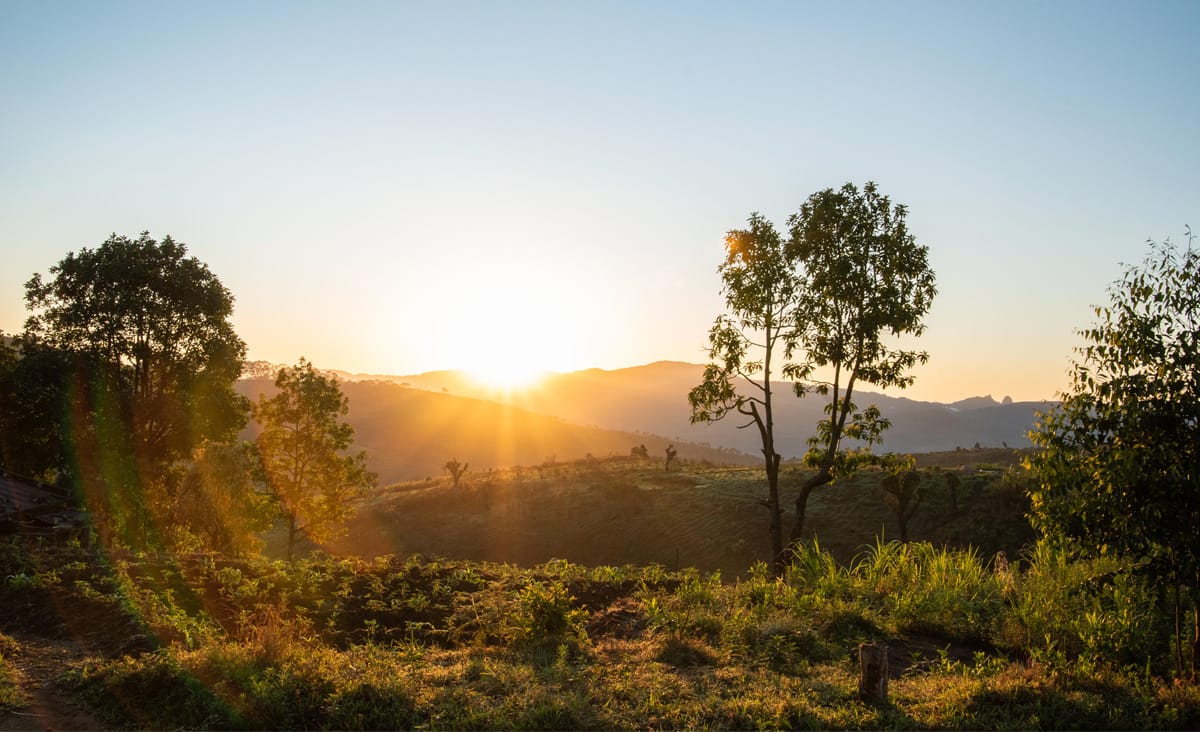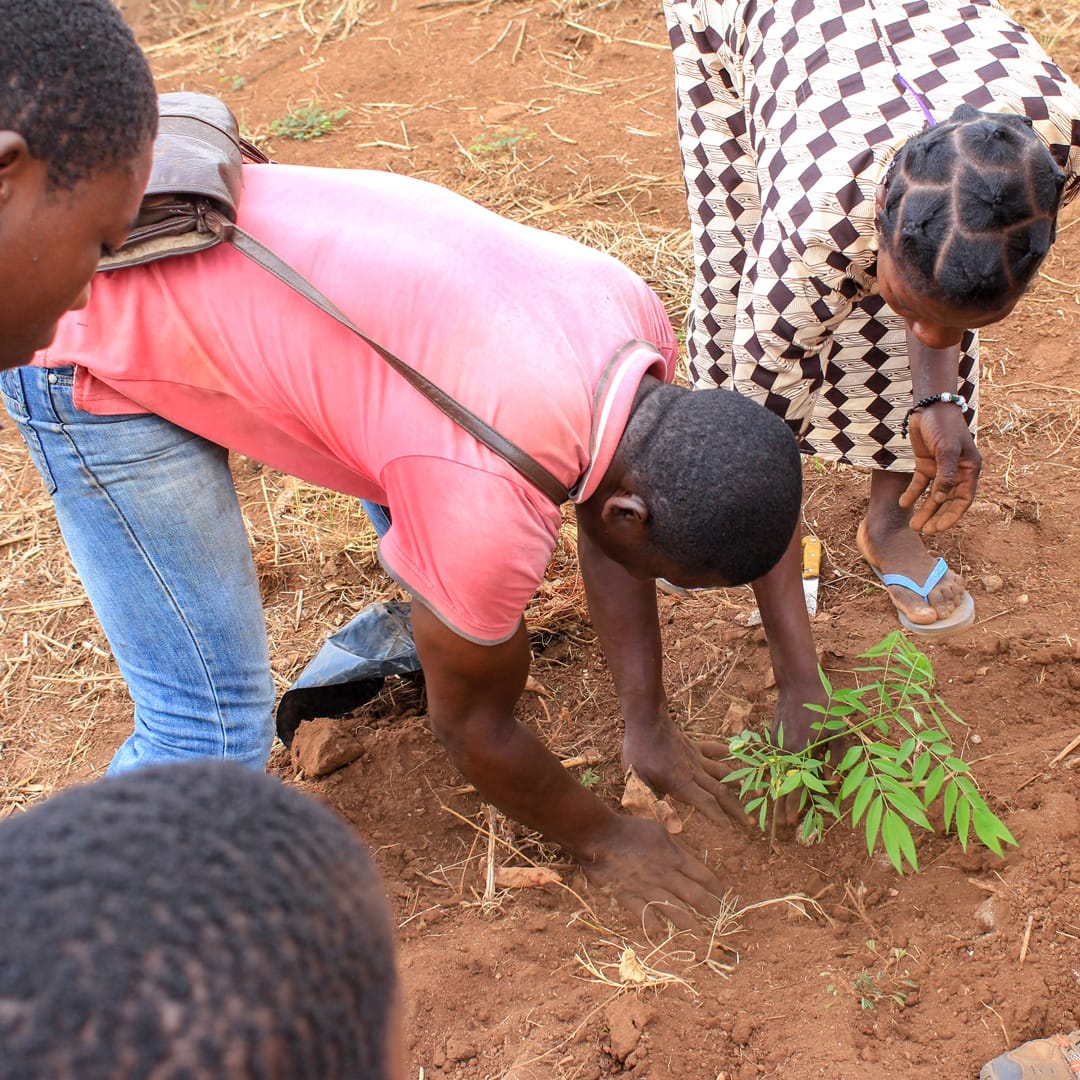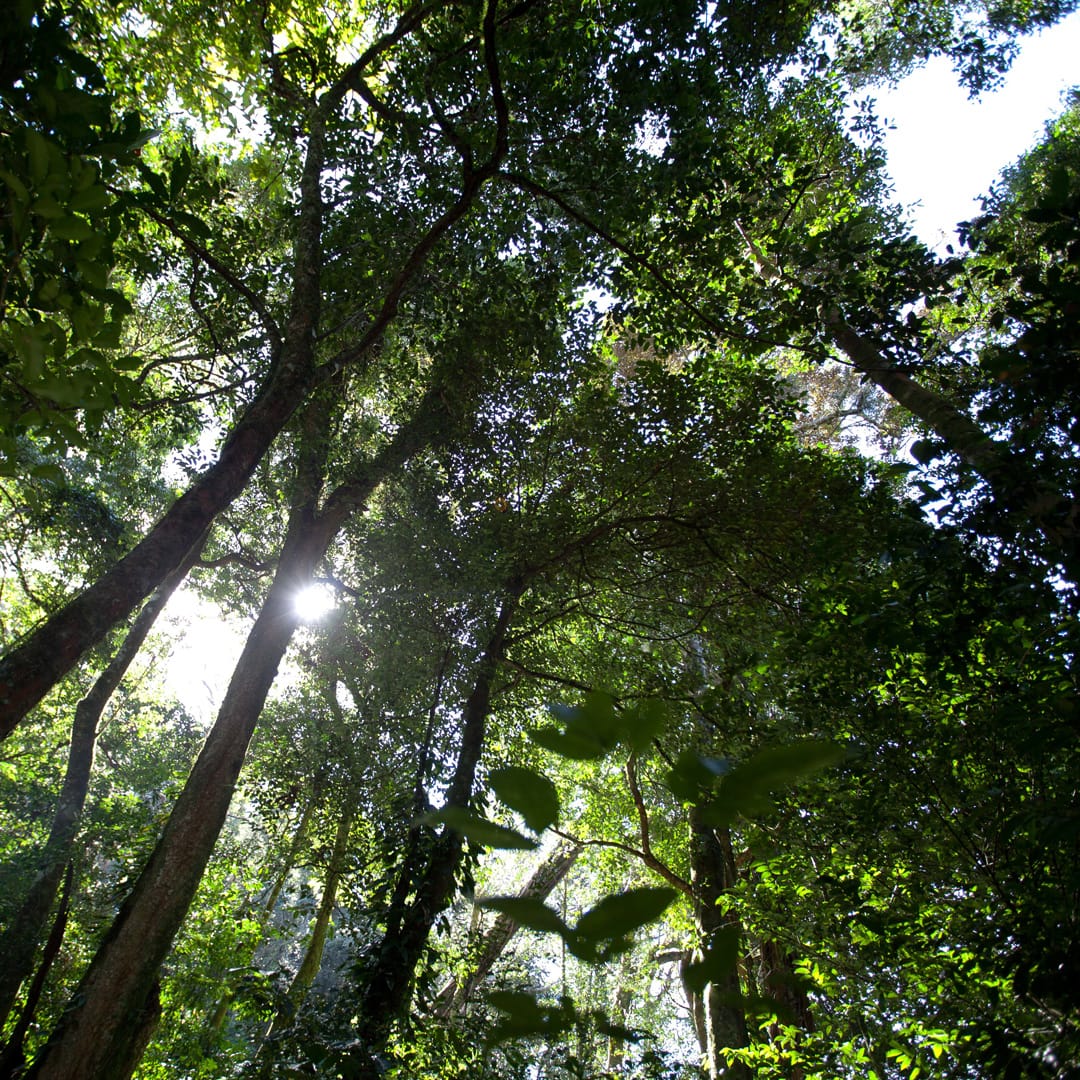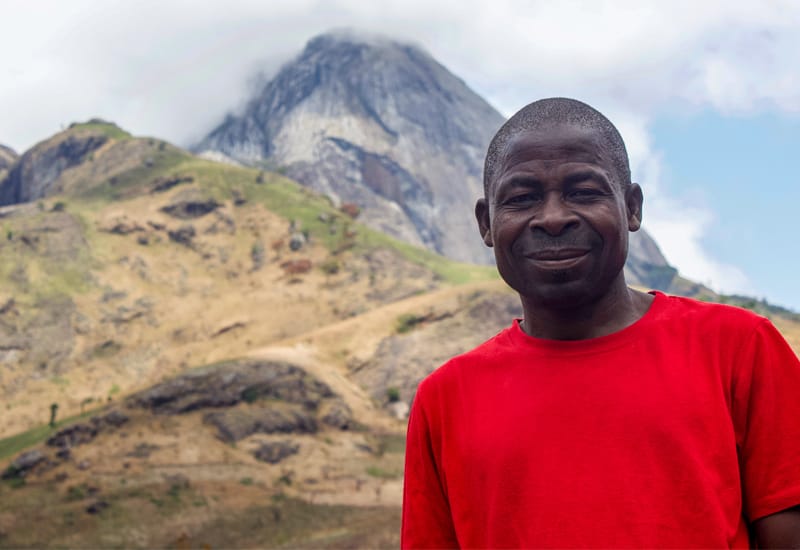Native plants restoration promotes both environmental and people’s health

Forest landscape near Mount Namuli, Mozambique | Roshni Lodhia/Legado
On the hills surrounding Mount Namuli grow dozens of species used in Lomwe traditional medicine. Medicine is mostly made from small plants or the bark, roots, and leaves from trees. For example, Tuthuli (pega-pega) leaves are crushed and mixed with fresh water to give pregnant women to make it easier for the baby to come out, or the stems of the Mukhonha, Mukhwi are Imbare plants are used to help relieve swelling.
However, over the past few decades, deforestation has threatened the places these medicinal plants grow.

Community members plant trees near Mount Namuli | Legado
A major driver of deforestation on Namuli is the clearing of land for farming, particularly potato and tomato farming along the river banks, some of which is motivated by the need to pay for expensive healthcare. In addition, small fires used for agriculture can turn into devastating forest fires, while the cutting of trees for logging and firewood collection leads to further ecosystem loss. Forest destruction also compromises Namuli’s water source by affecting local rivers, which also support the growth of plants used in Lomwe traditional medicine.
Last year, community members on Mount Namuli committed to fulfill their health priority by preserving traditional medicinal plants. Together, community members will protect their forests and reforesting lands where these important plants grow.

The forests of Mount Namuli | Legado
1,000 seedlings at a time
In late 2023, Daughters for Earth Foundation funded the Namuli reforestation project. With funding in place, the Legado: Namuli team and our partner Namuli Wiwanana began to engage the community and recruit community volunteers from all villages to work with the local nurseries, the community leaders and other key community members such as traditional healers to jump start this work.
Together, the community is reflecting on the reasons for deforestation, building a map of degraded areas, and identifying the best places to plant new seedlings.
Next, the team is interviewing 15 local traditional doctors, leaders, traditional midwives, and nurserymen and women to learn more about what plants are the most important to protect, and where they are found.

“If only we could teach children all about the value of these plants and why they are disappearing! My children know that when they have a stomach ache they can look for some plants that I have taught them to use, like Insaua; in this case they can dip this plant in water and drink it to cure the pain.”
The goal is to grow and replant 1,000 native plant seedlings in ideal locations during the rainy season (late November), which local nursery workers and volunteers will tend to over the year as they prepare for another planting cycle. This work has built on a previous effort to catalog local plants.
We see this work becoming an annual cycle of reforestation that promotes the overall well-being of the Mount Namuli communities—led by the community itself.
